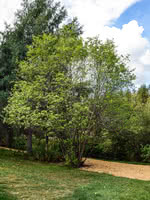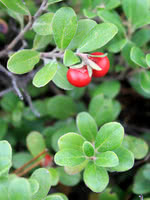Mon-Fri 9am - 5pm Mountain time
Grey Alder vs Bearberry
Alnus incana
Arctostaphylos uva-ursi
NOT AVAILABLE THIS SEASON - MIGHT RETURN
NOT AVAILABLE THIS SEASON - MIGHT RETURN
River Alder is a large shrub or small tree with a multi-stemmed, spreading habit. It is an excellent tree to plant if you want to stabilize the soil near rivers and creeks.
Unlike the other alder varieties, River Alder is attractive enough to be included in riverside plantings by municipal and provincial park organizations.
Note: We use Grey Alder for Alnus incana. This species is also known by many other common names, including River Alder, Speckled Alder, and others. Please confirm the scientific name to ensure you are ordering the correct plant.
Bearberry is a dwarf shrub known for its creamy pink flowers and red edible fruits.
It is great as a filler in gardens and flowerbeds in place of invasive ground cover plants, like English Ivy.
Bearberry will attract hummingbirds, butterflies and bees to your property. It is one of the top 12 plants recommended by the Alberta Native Bee Council to support pollinators.

